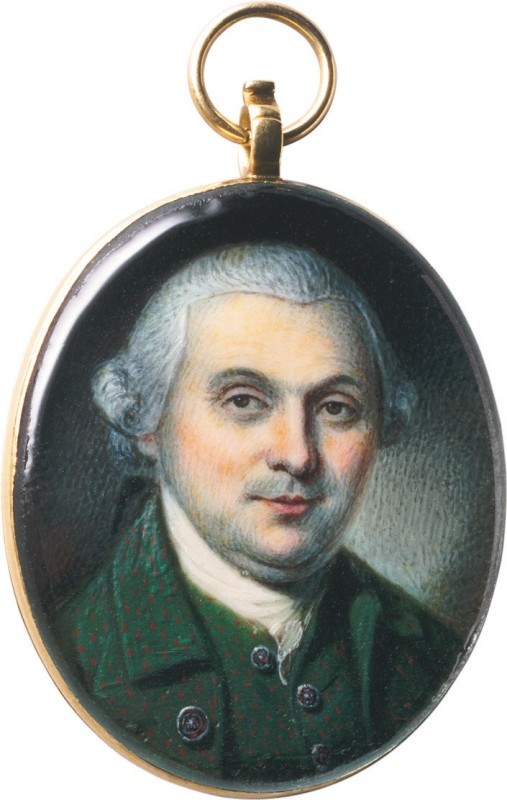
Charles Willson Peale, Benjamin Randolph, Philadelphia, Pennsylvania, 1775–1780. Watercolor on ivory. 1 1/4" x 1". (Courtesy, Philadelphia Museum of Art; gift of Mr. and Mrs. Timothy Johnes Westbrook, 1990.)
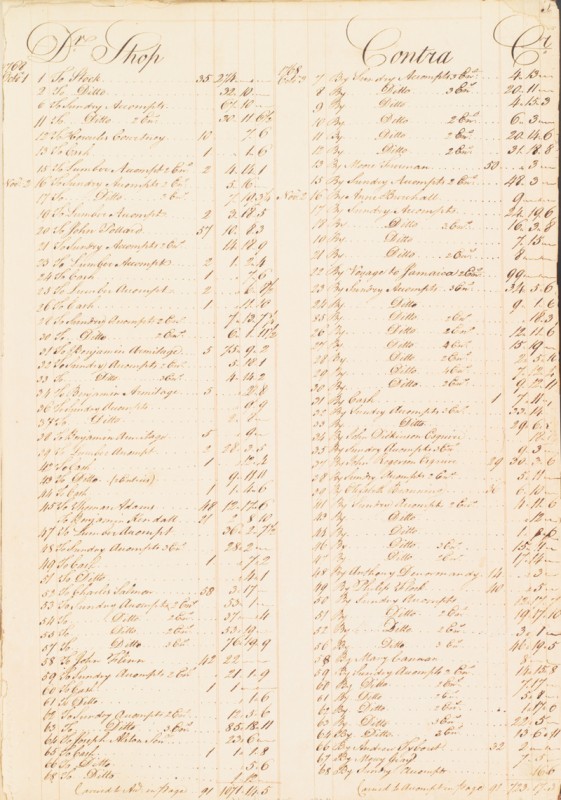
Page 3 from Benjamin Randolph’s account book. (Courtesy, Manuscripts and Archives Division, New York Public Library, Astor, Lenox and Tilden Foundations.)
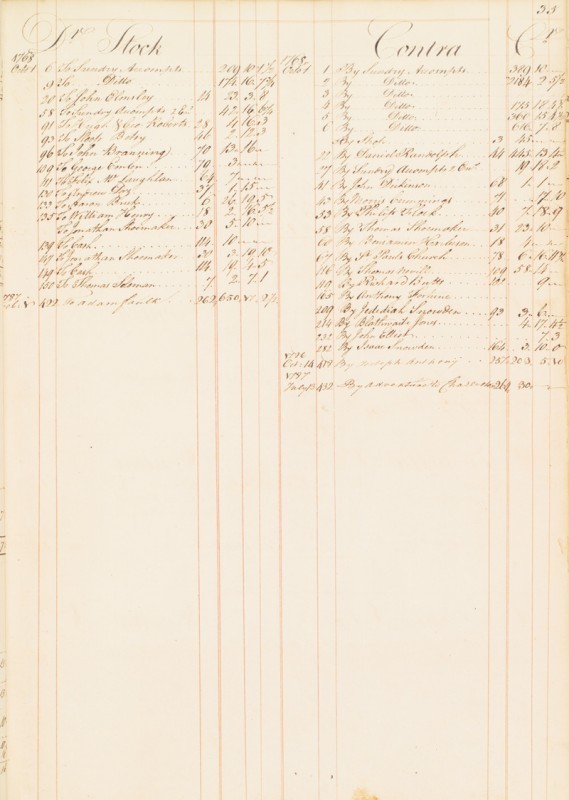
Page 35 from Benjamin Randolph’s account book. (Courtesy, Manuscripts and Archives Division, New York Public Library, Astor, Lenox and Tilden Foundations.)
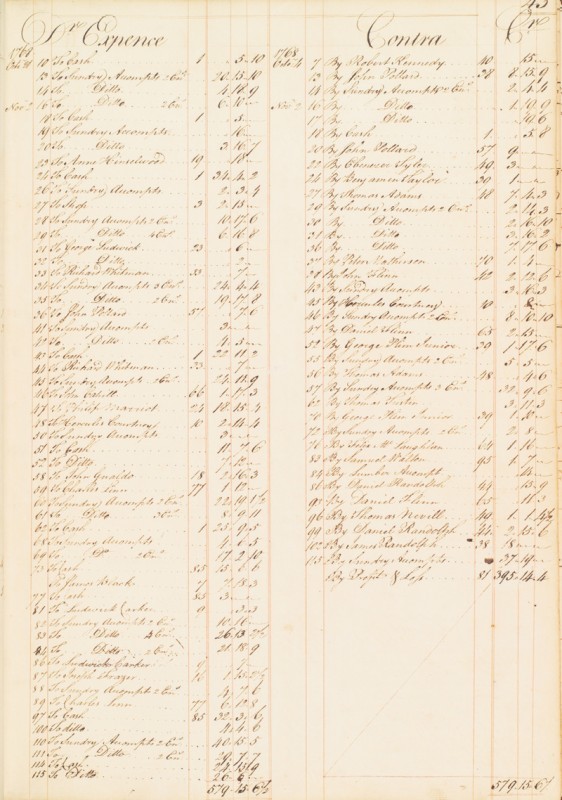
Page 43 from Benjamin Randolph’s account book. (Courtesy, Manuscripts and Archives Division, New York Public Library, Astor, Lenox and Tilden Foundations.)
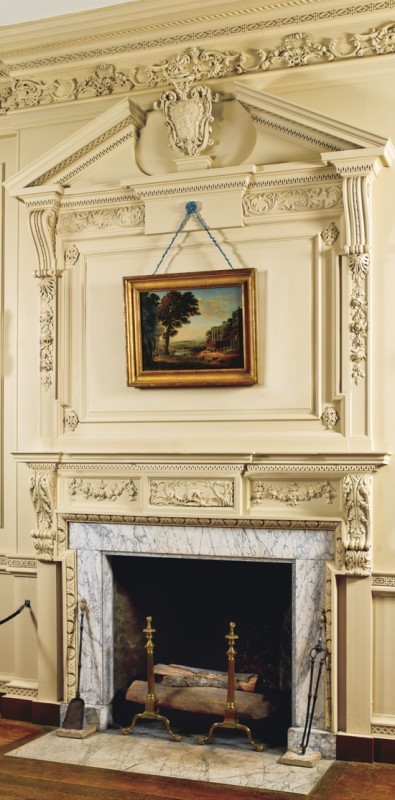
Chimneypiece from the Samuel Powel House, Philadelphia, Pennsylvania, 1770. (Courtesy, Philadelphia Museum of Art; photo, Gavin Ashworth.)
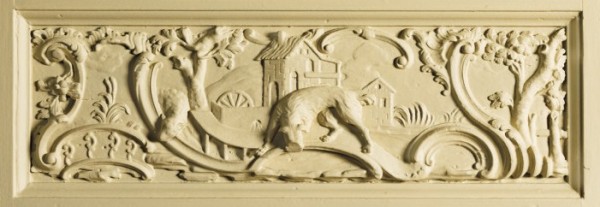
Detail of the center tablet of the chimneypiece illustrated in fig. 5. (Photo, Gavin Ashworth).
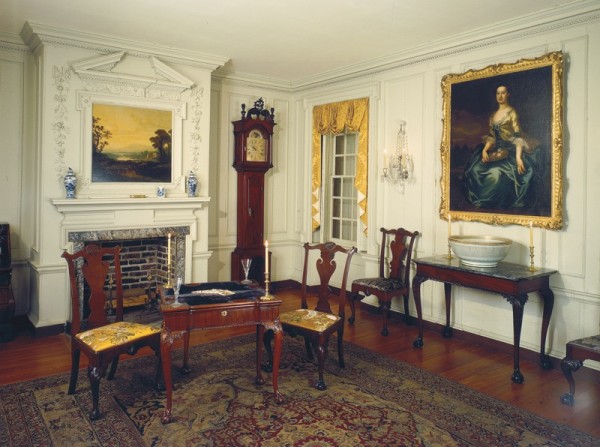
Chimneypiece from the Thomas Ringgold House, Chestertown, Maryland, ca. 1770. (Courtesy, Baltimore Museum of Art.)

Detail of the frieze appliqué over a door from the Thomas Ringgold House. (Photo, Gavin Ashworth.)

Detail of the frieze appliqué on the chimneypiece illustrated in fig. 7. (Photo, Gavin Ashworth.)

Design for a frieze appliqué illustrated on pl. 2 in Thomas Johnson’s A New Book of Ornaments (1762). (© V&A Images/Victoria and Albert Museum, London, www.vam.ac.uk.)
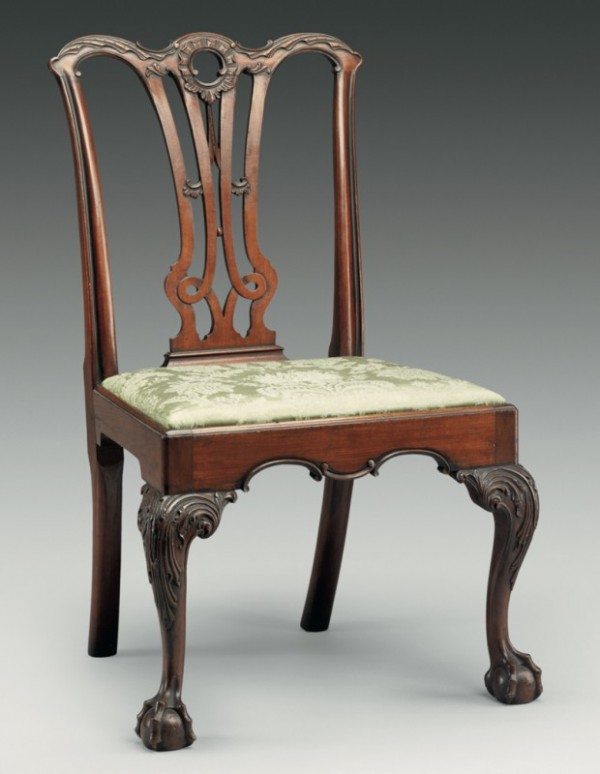
Benjamin Randolph, side chair, Philadelphia, Pennsylvania, ca. 1770. Mahogany. H. 38 1/8", W. 23 3/4", D. 19". (Courtesy, Museum of Fine Arts, Boston, M. and M. Karolik Collection, © 2000, all rights reserved.)
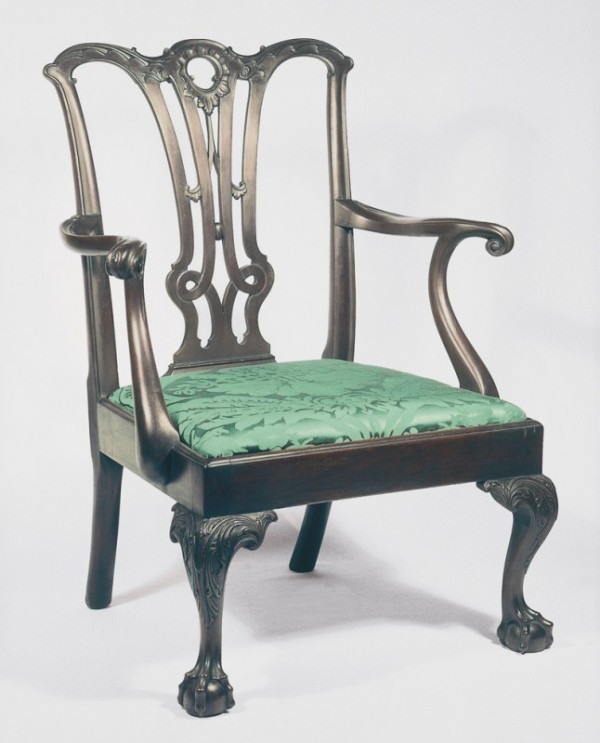
Armchair attributed to the shop of Benjamin Randolph, Philadelphia, Pennsylvania, ca. 1770. Mahogany. H. 37 5/8", W. 24 3/4" (seat), D. 19 3/4" (seat). (Private collection; photo, Joe Kindig Antiques.)
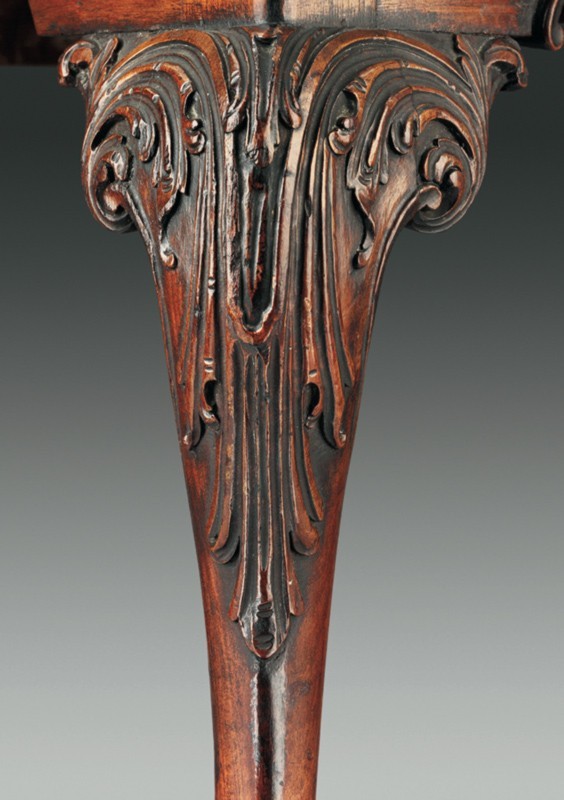
Detail of the knee carving on the side chair illustrated in fig. 11.
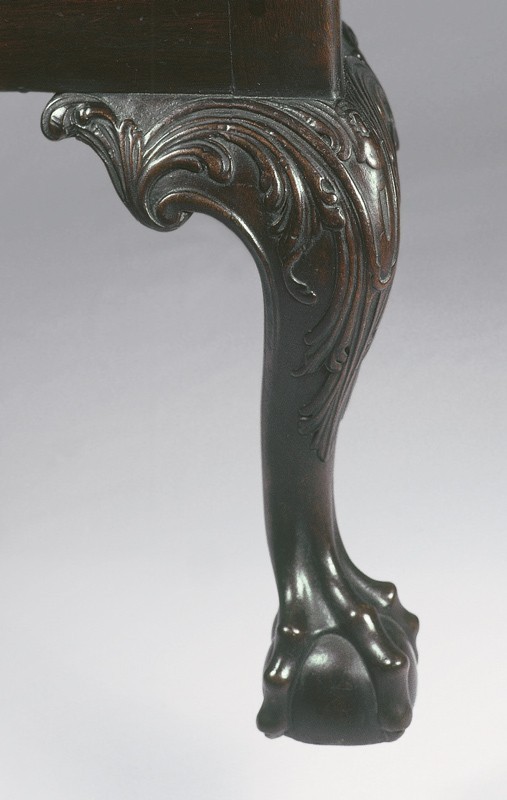
Detail of the knee carving on the armchair illustrated in fig. 12.
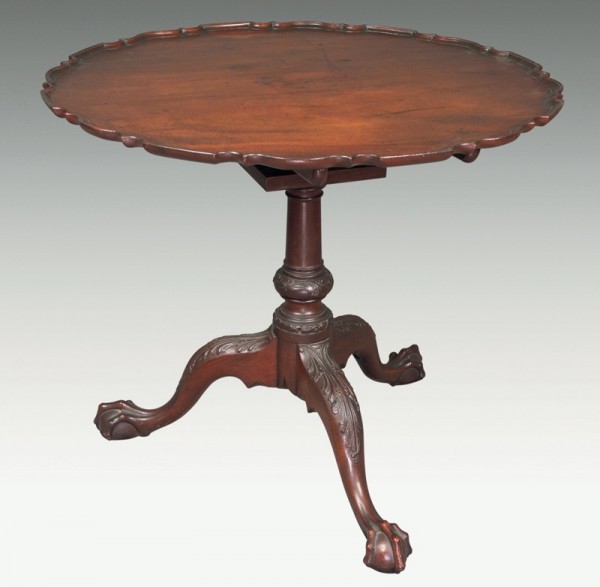
Tea table attributed to the shop of Benjamin Randolph, Philadelphia, Pennsylvania, 1765–1775. Mahogany. Dimensions not recorded. (Private collection; photo, Joe Kindig Antiques.)
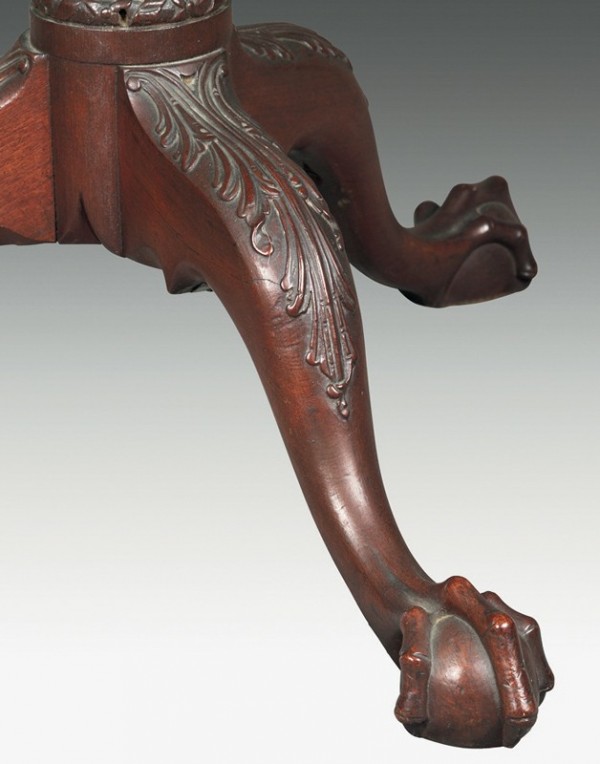
Detail of the knee carving on the tea table illustrated in fig. 15.
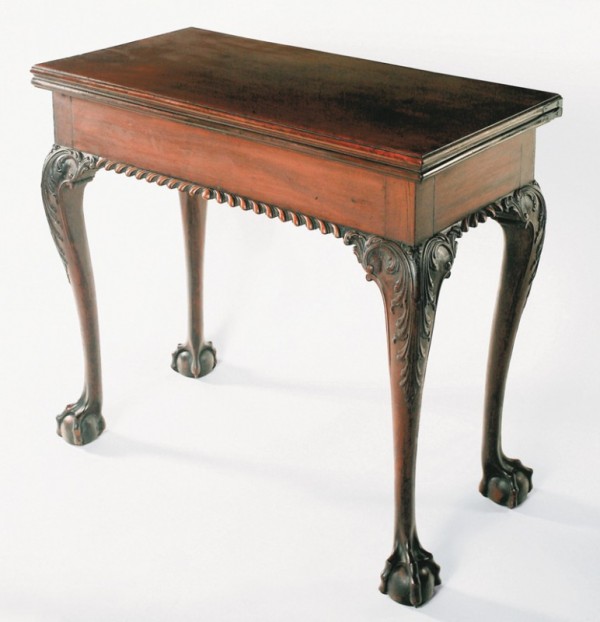
Card table with carving attributed to Hercules Courtenay, Philadelphia, Pennsylvania, 1765–1775. Mahogany with unidentified secondary woods. Dimensions not recorded. (Private collection; photo, Mack Coffey.)
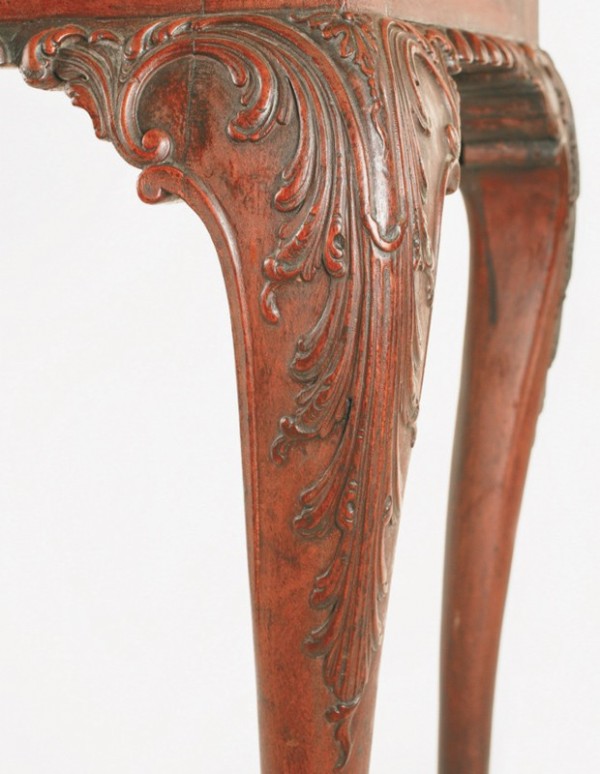
Detail of the knee carving on the card table illustrated in fig. 17.

Detail of the right mantle truss of the chimneypiece illustrated in fig. 5. (Photo, Gavin Ashworth.)
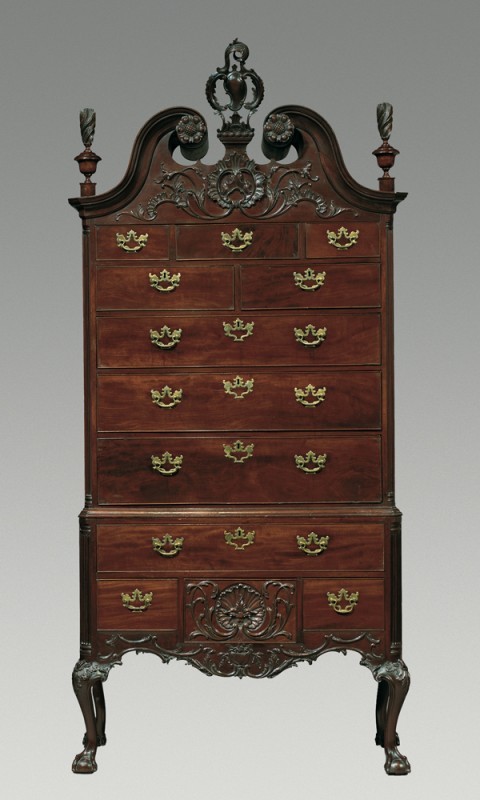
High chest attributed to the shop of Benjamin Randolph, Philadelphia, Pennsylvania, 1765–1770. Mahogany with poplar, yellow pine, and cedar. H. 89 7/8", W. 46 1/8", D. 23 5/8". (Courtesy, Nelson-Atkins Museum of Art.)
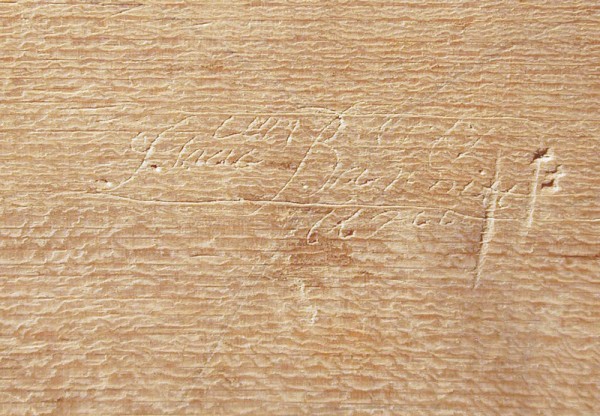
Detail of the inscription on the high chest illustrated in fig. 20.
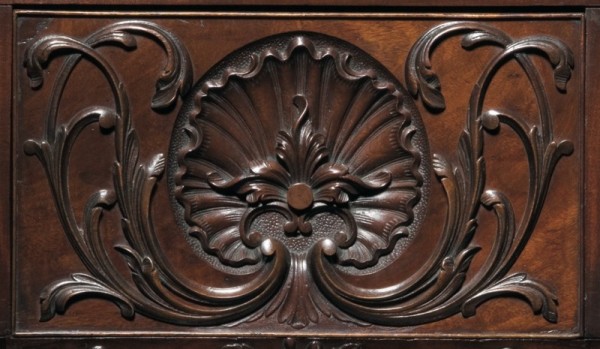
Detail of the carving on the lower shell drawer of the high chest illustrated in fig. 20.
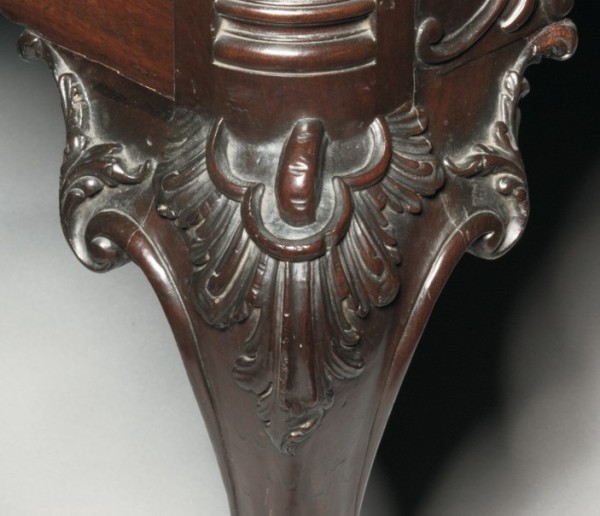
Detail of the knee carving on the high chest illustrated in fig. 20.
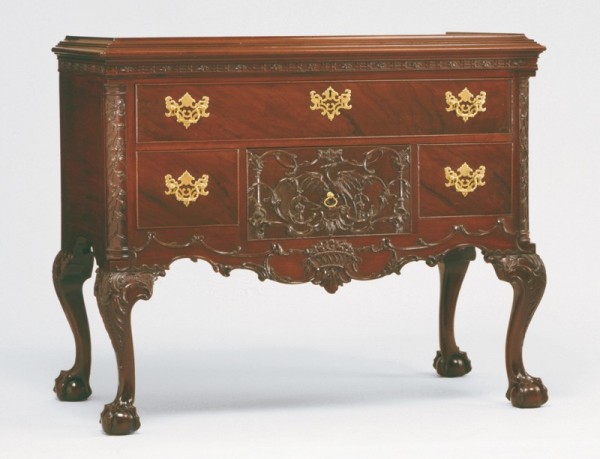
Base of a high chest with carving attributed to John Pollard, Philadelphia, Pennsylvania, 1765–1775. Mahogany with yellow pine, sweet gum, and white cedar. H. 38", W. 45 5/8", D. 22 13/16". (Courtesy, Diplomatic Reception Rooms, U.S. Department of State.)
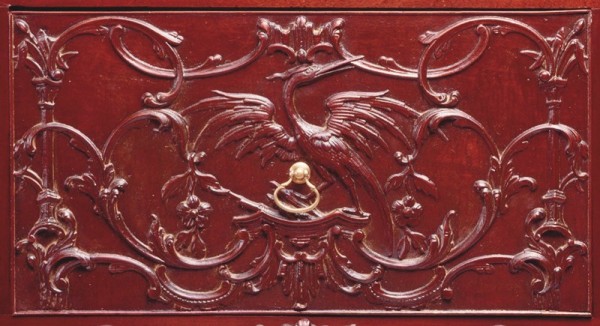
Detail of the carving on the center drawer of the high chest base illustrated in fig. 24.
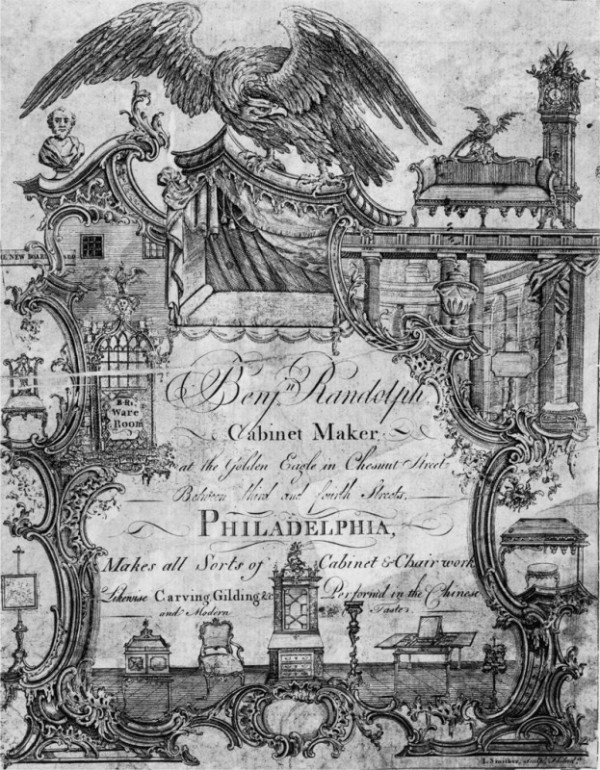
James Smither, trade card of Benjamin Randolph, Philadelphia, Pennsylvania, 1769. Engraving on paper. 7" x 9". (Courtesy, Library Company of Philadelphia.) The desk-and-bookcase at the bottom center was copied from an engraving in Thomas Chippendale’s Gentleman and Cabinet-Maker’s Director (see fig. 27). No other contemporary reproduction of that image in Philadelphia is known.
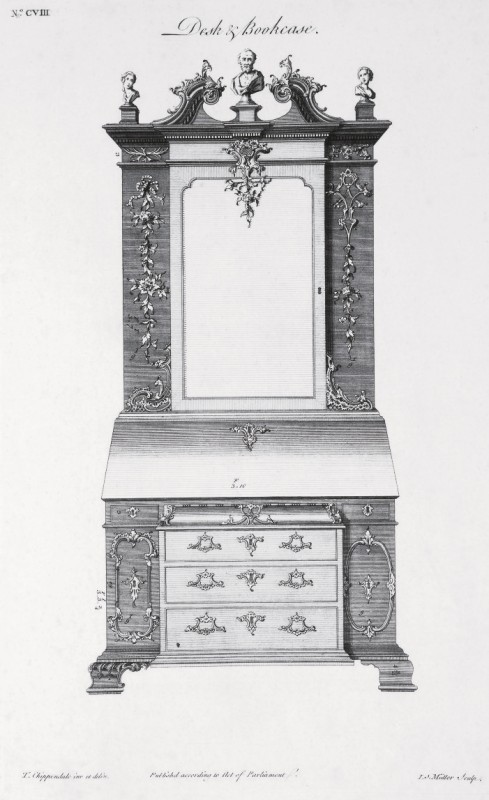
Design for a desk-and-bookcase illustrated on plate 108 in the third edition of Thomas Chippendale’s Gentleman and Cabinet-Maker’s Director (1762) This design appeared on pl. 78 in the first (1754) and second (1755) editions.
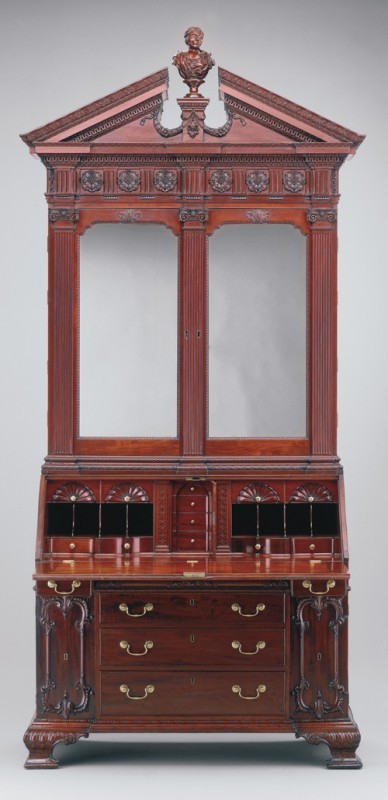
Desk-and-bookcase attributed to the shop of Benjamin Randolph, Philadelphia, Pennsylvania, ca. 1765. Mahogany with yellow pine, white cedar, poplar, and white oak. H. 114 1/4", W. 53 3/4", D. 26 7/8". (Courtesy, Kaufman Americana Collection; photo, Dirk Bakker.) The lower case of this desk-and-bookcase was derived from a design in Thomas Chippendale’s Gentleman and Cabinet-Maker’s Director (see fig. 27). The only other Philadelphia case piece with details corresponding to that design is a desk-and-bookcase (see fig. 31) with feet like those on the example shown here.
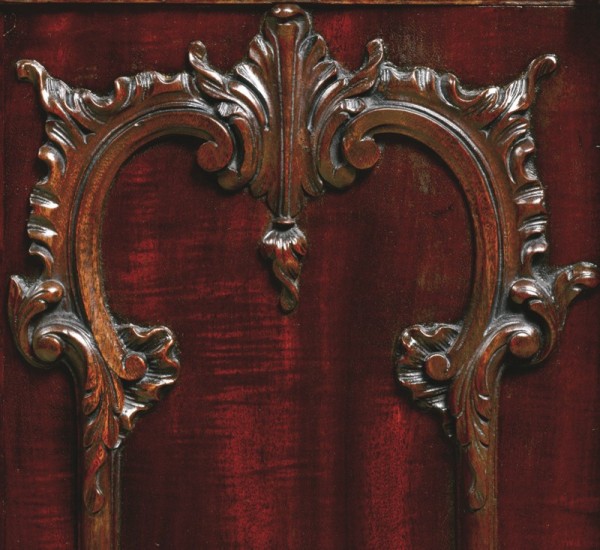
Detail of the carving on the left door adjacent to the lower drawers of the desk-and-bookcase illustrated in fig. 28. (Photo, Gavin Ashworth.)
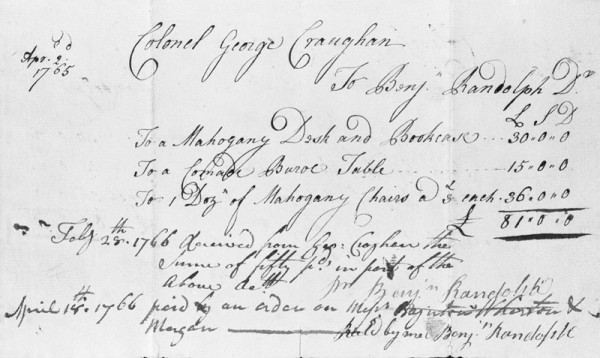
Bill from Benjamin Randolph to George Croghan. (Courtesy, Historical Society of Pennsylvania, Cadwalader Collection.)
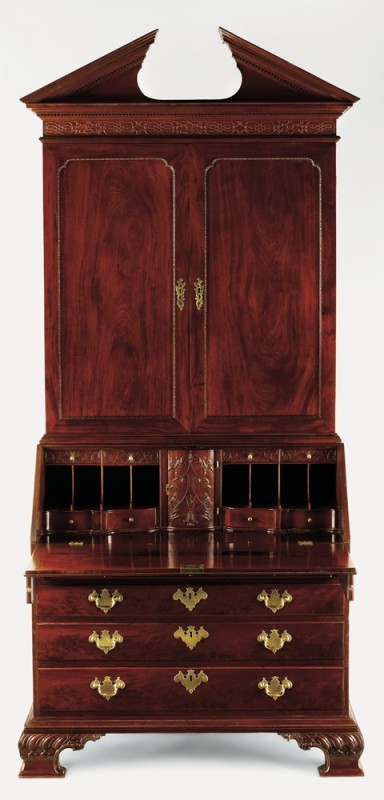
Desk-and-bookcase attributed to the shop of Benjamin Randolph with carving attributed to John Pollard, Philadelphia, Pennsylvania, ca. 1770. Mahogany with tulip poplar and white cedar. H. 98 1/2", W. 46", D. 25 1/2". (Private collection; photo, Gavin Ashworth.)
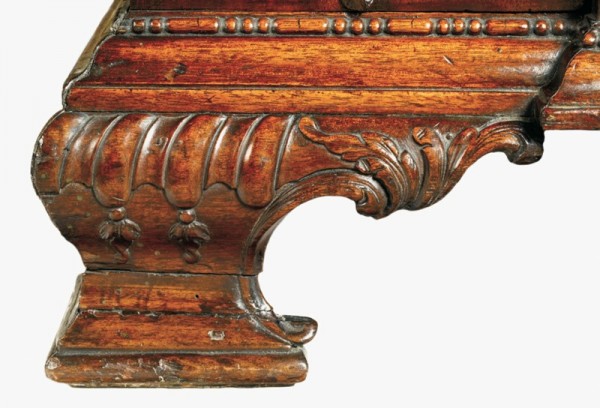
Detail of the left front foot of the desk-and-bookcase illustrated in fig. 28. (Photo, Gavin Ashworth.)
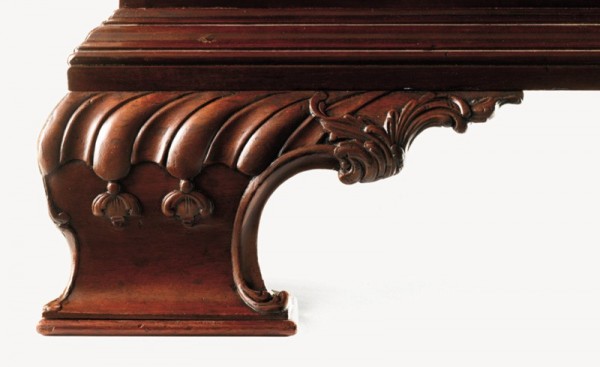
Detail of the left front foot of the desk-and-bookcase illustrated in fig. 31. (Photo, Gavin Ashworth.)
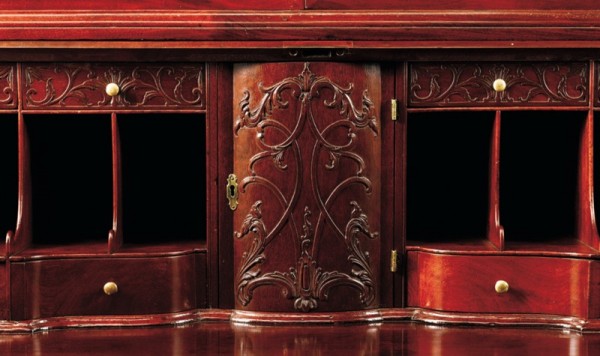
Detail showing the carving on the prospect door and flanking drawers in the writing compartment of the desk-and-bookcase illustrated in fig. 31. (Photo, Gavin Ashworth.)
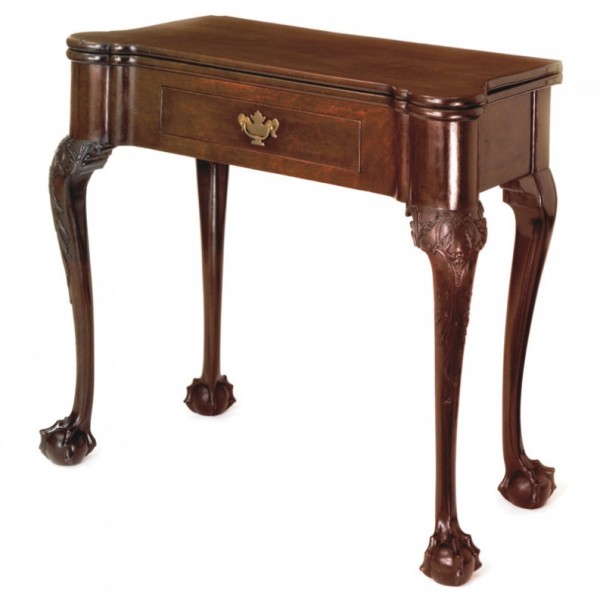
Benjamin Randolph, card table, Philadelphia, Pennsylvania, 1765–1775. Mahogany with white oak and poplar. H. 28 3/4", W. 33 1/4", D. 16". (Courtesy, Winterthur Museum.)
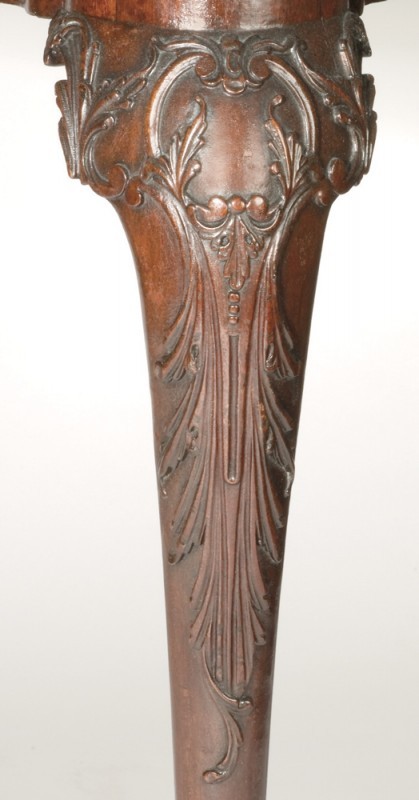
Detail of the knee carving on the card table illustrated in fig. 35.
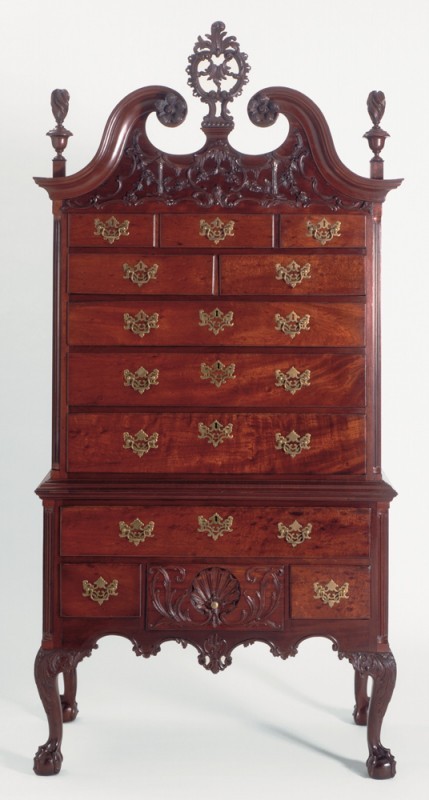
High chest attributed to the shop of Benjamin Randolph, Philadelphia, Pennsylvania, ca. 1770. Mahogany with poplar, yellow pine, white oak, and white cedar. H. 90 1/4", W. 45 5/8", D. 25 1/2". (Courtesy, Winterthur Museum.)
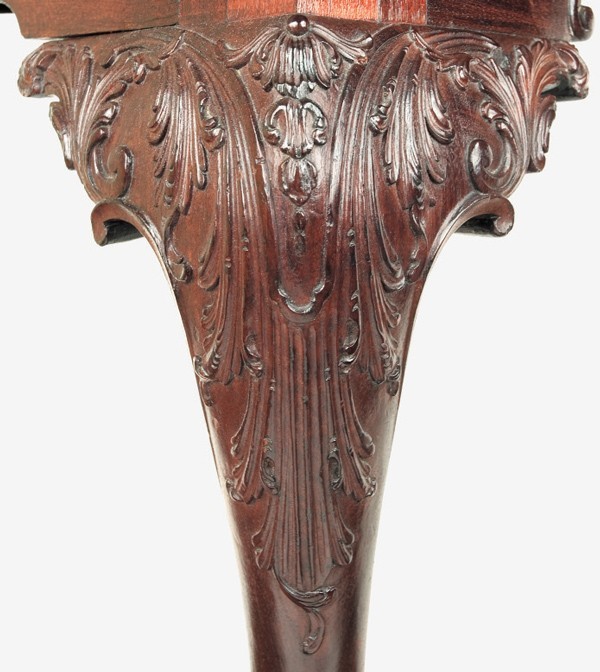
Detail of the knee carving on the high chest illustrated in fig. 37.
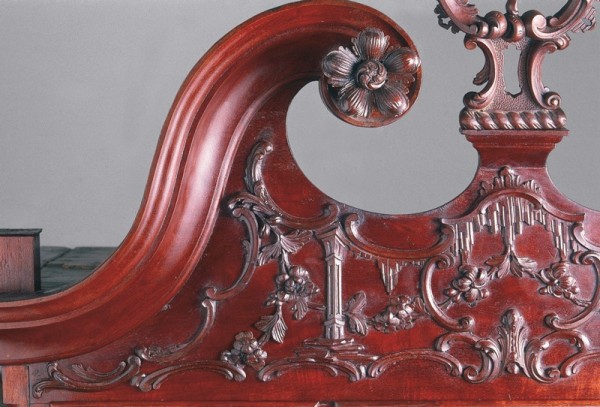
Detail of the tympanum appliqué of the high chest illustrated in fig. 37.
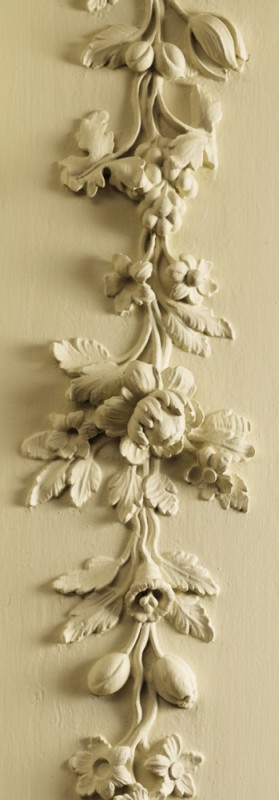
Detail of the garland to the right of the chimneypiece illustrated in fig. 7. (Photo, Gavin Ashworth.)
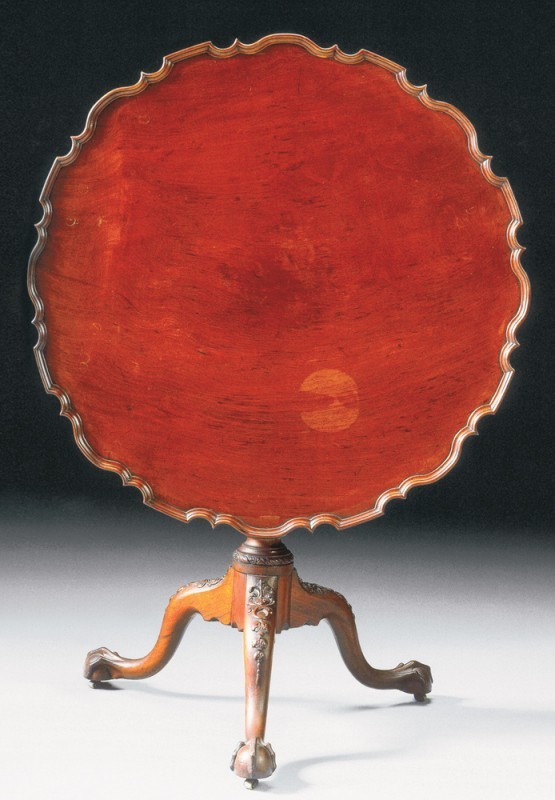
Tea table attributed to the shop of Benjamin Randolph, Philadelphia, Pennsylvania, ca. 1775. Mahogany. H. 29 1/2", diam. of top: 35". (Private collection; photo, Christie’s.)
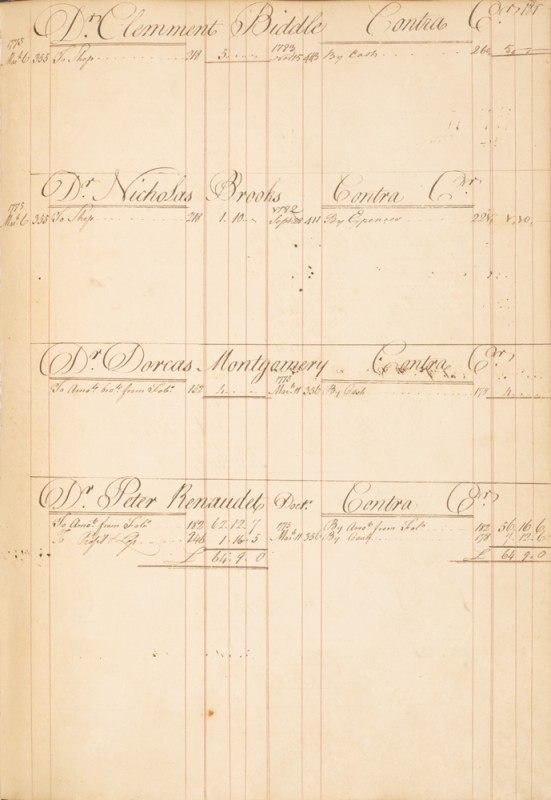
Page 181 from Benjamin Randolph’s account book. (Courtesy, Manuscripts and Archives Division, New York Public Library, Astor, Lenox and Tilden Foundations.)
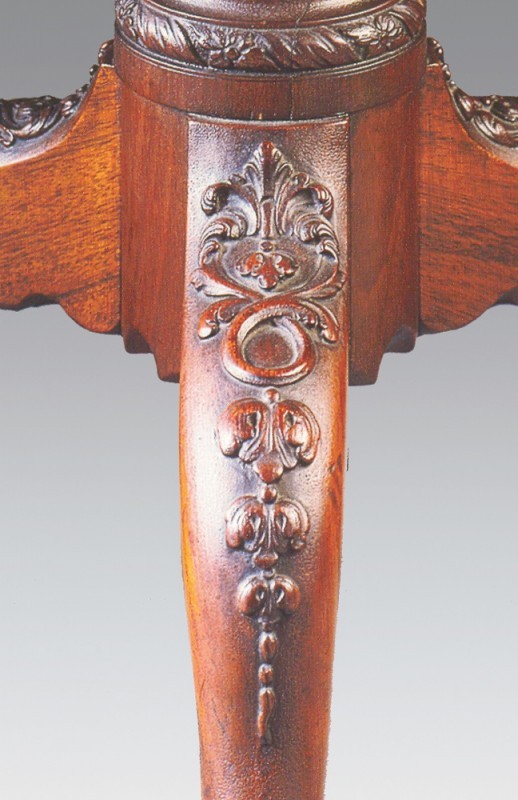
Detail of the knee carving on the tea table illustrated in fig. 41.
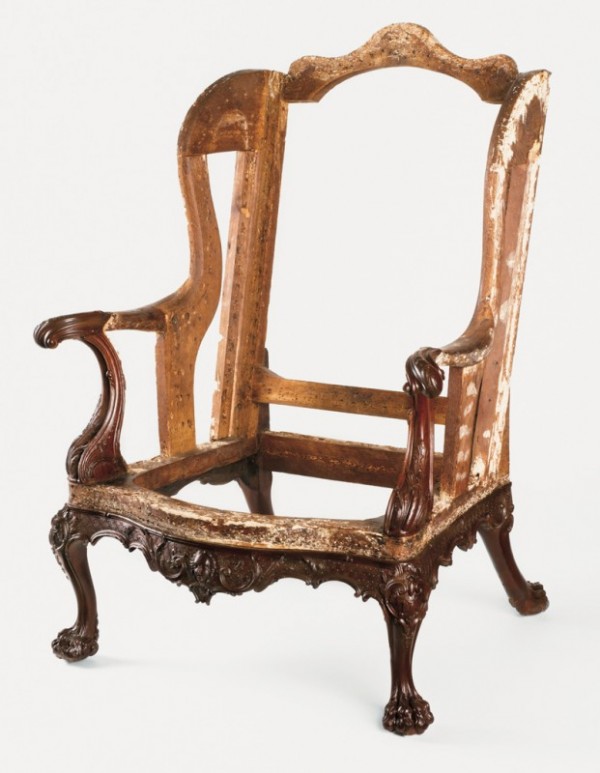
Easy chair attributed to the shop of Benjamin Randolph with carving attributed to John Pollard, Philadelphia, Pennsylvania, 1765–1775. Mahogany with white oak. H. 45 1/4", W. 24 3/8", D. 2715/16". (Courtesy, Philadelphia Museum of Art, purchased with museum funds, 1929.)
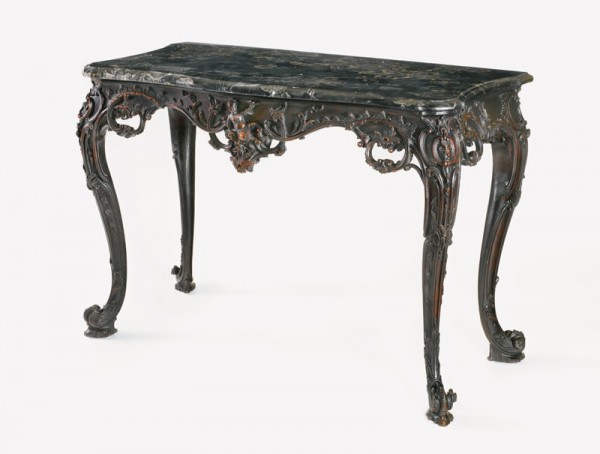
Sideboard table attributed to the shop of Benjamin Randolph with carving attributed to John Pollard, Philadelphia, Pennsylvania, 1765–1770. Mahogany with yellow pine and walnut. H. 32 3/8", W. 48", D. 23 1/4". (Courtesy, Metropolitan Museum of Art, John Stewart Kennedy Fund, 1918 [18.110.27]; photo, Gavin Ashworth.)
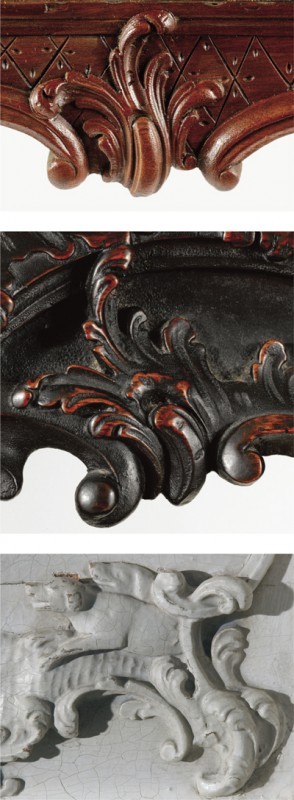
Details showing from top to bottom the carving on a side rail of the easy chair illustrated in fig. 44; the side rail of the sideboard table illustrated in fig. 45; and the left frieze appliqué below the mantle of the chimneypiece from the Stamper-Blackwell parlor.
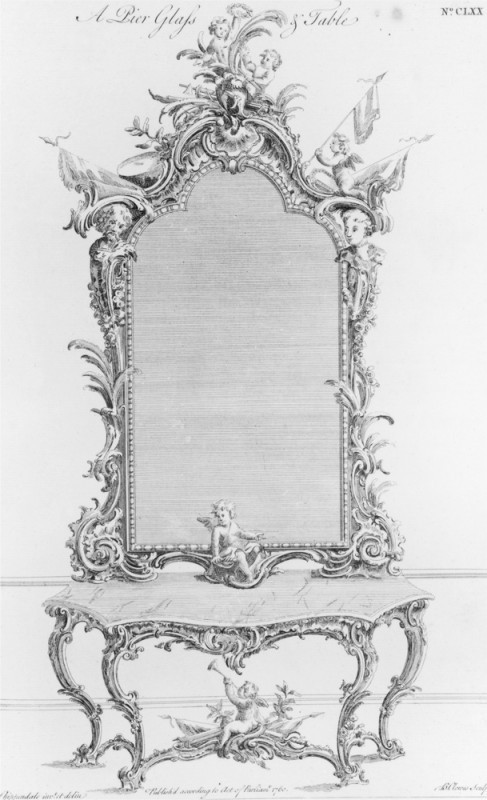
Design for a pier glass and table illustrated on pl. 152 in the third edition of Thomas Chippendale’s Gentleman and Cabinet-Maker’s Director (1762). (Courtesy, Winterthur Museum.)
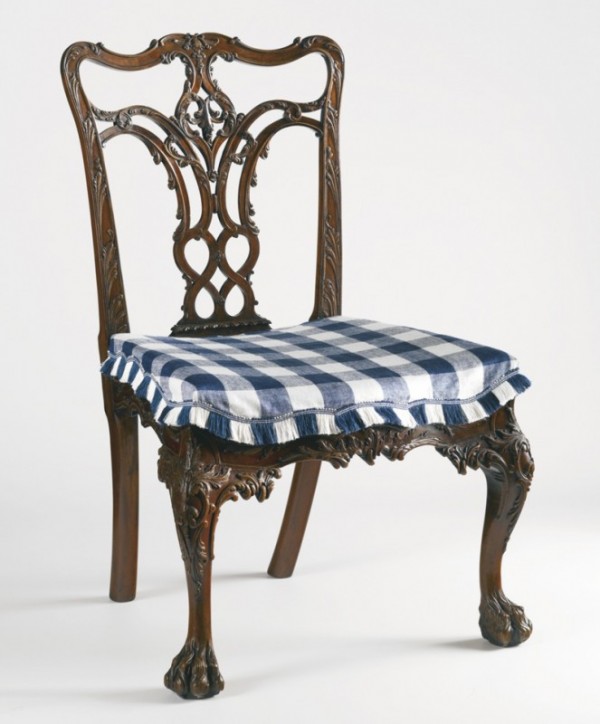
Side chair, attributed to the shop of Benjamin Randolph, Philadelphia, Pennsylvania, ca. 1769. Mahogany with white cedar. H. 36 3/4", W. 21 3/4" (seat), D. 17 7/8" (seat). (Chipstone Foundation; photo, Hans Lorenz.)
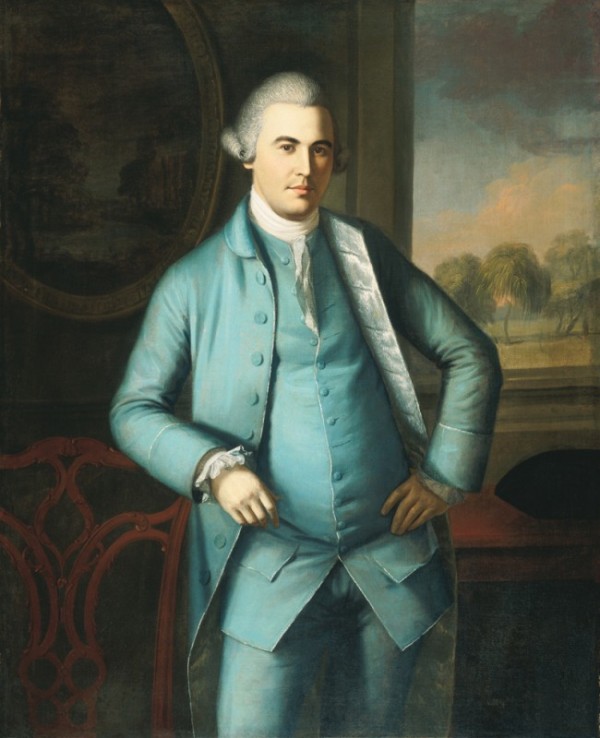
Charles Willson Peale, Lambert Cadwalader, Philadelphia, Pennsylvania, 1770. 50" x 40". (Courtesy, Philadelphia Museum of Art, purchased for the Cadwalader Collection with funds contributed by the Mabel Pew Myrin Trust and the gift of an anonymous donor.)
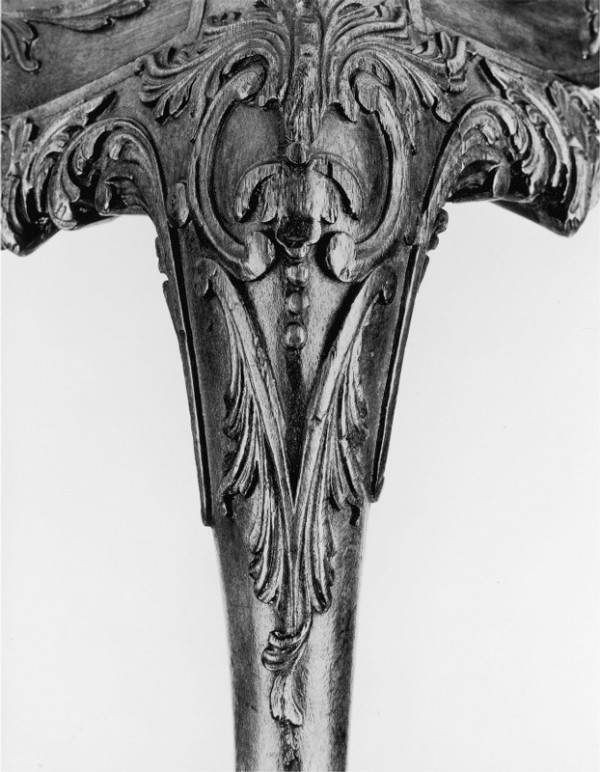
Detail of the knee carving on the side chair illustrated in fig. 48.
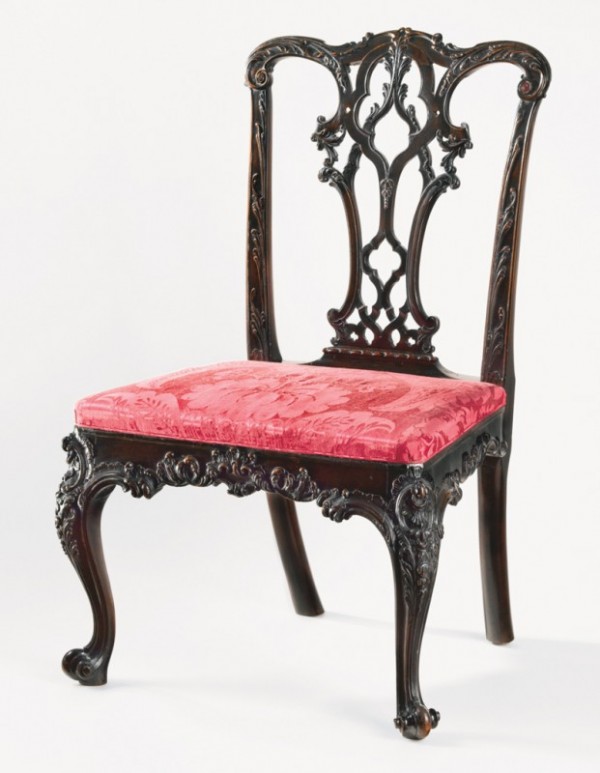
Side chair attributed to the shop of Benjamin Randolph, Philadelphia, Pennsylvania, 1765–1770. Mahogany. H. 37 1/2", W. 24 1/2", D. 21". (Courtesy, Philadelphia Museum of Art; photo, Gavin Ashworth.)
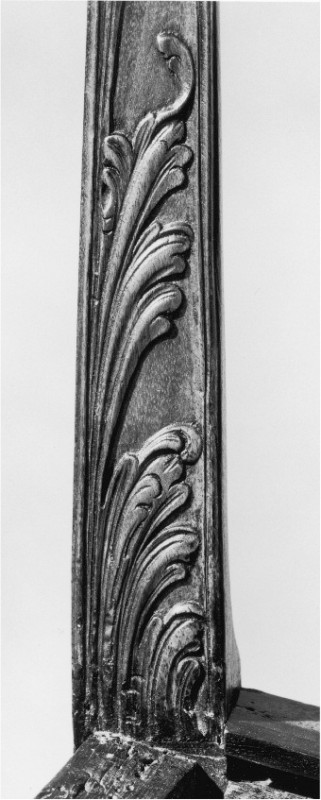
Detail of the carving on the left stile of the side chair illustrated in fig. 48.

Detail of the carving on the left stile of the side chair illustrated in fig. 51. (Photo, Gavin Ashworth.)
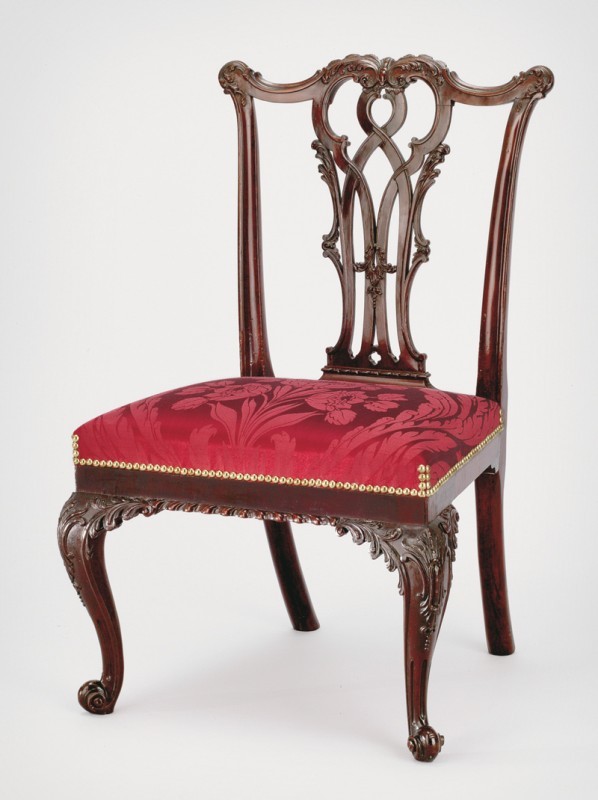
Side chair attributed to the shop of Benjamin Randolph, Philadelphia, Pennsylvania, 1765–1770. Mahogany with tulip poplar. H. 41 1/2", W. 27", D. 15 1/2". (Courtesy, Colonial Williamsburg Foundation; photo, Hans Lorenz.)
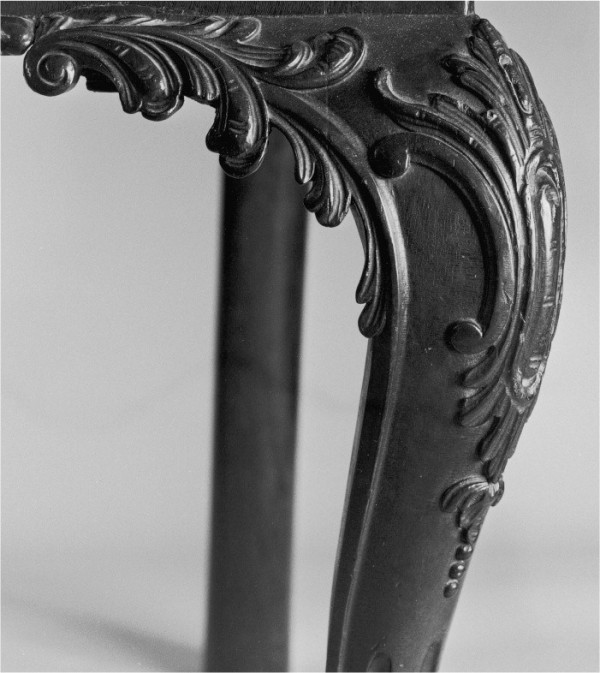
Detail of the knee carving on the side chair illustrated in fig. 54.
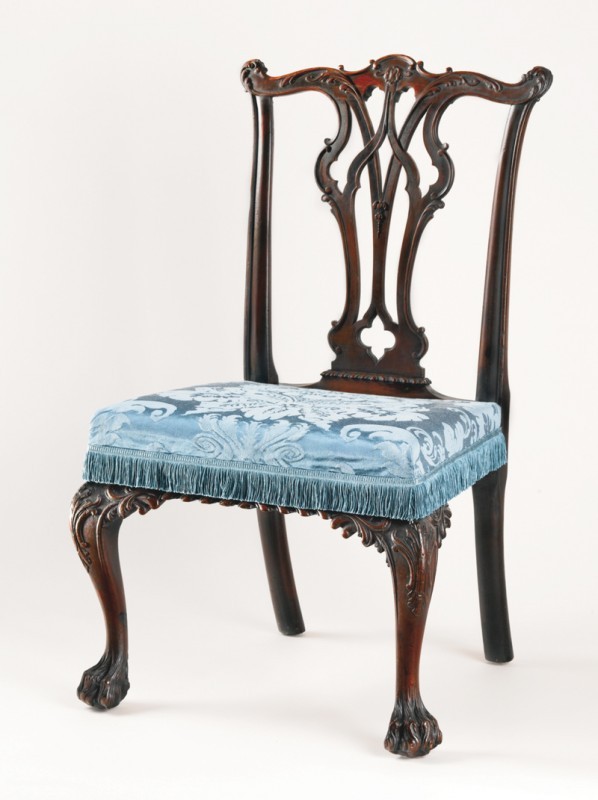
Side chair attributed to the shop of Benjamin Randolph, Philadelphia, Pennsylvania, ca. 1770. Mahogany with unidentified secondary woods. Dimensions not recorded. . (Courtesy, Philadelphia Museum of Art, purchased with the Fiske Kimball Fund, the John T. Morris Fund, and funds contributed by Marguerite and Gerry Lenfest, the Richard Chilton Foundation, H. Richard Dietrich Jr., Robert L. McNeil Jr., Fitz Eugene Dixon Jr., Mrs. E. Newbold Smith, Charlene Sussel, Anne H. and Frederick Vogel III, Andrew M. Rouse, and Dr. and Mrs. Robert E. Booth, 2003.)
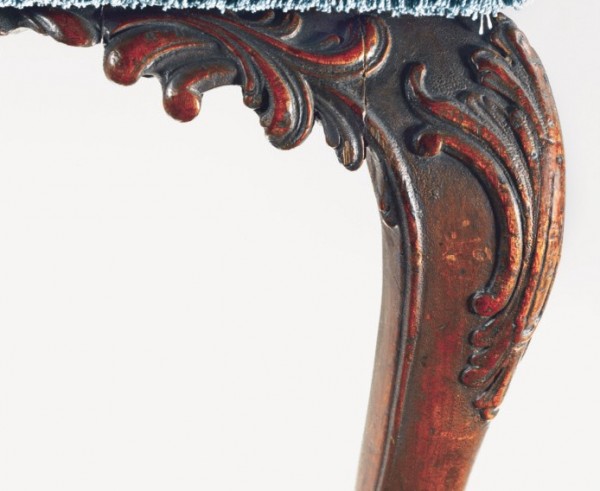
Detail of the knee carving on the side chair illustrated in fig. 56. (Photo, Gavin Ashworth.)
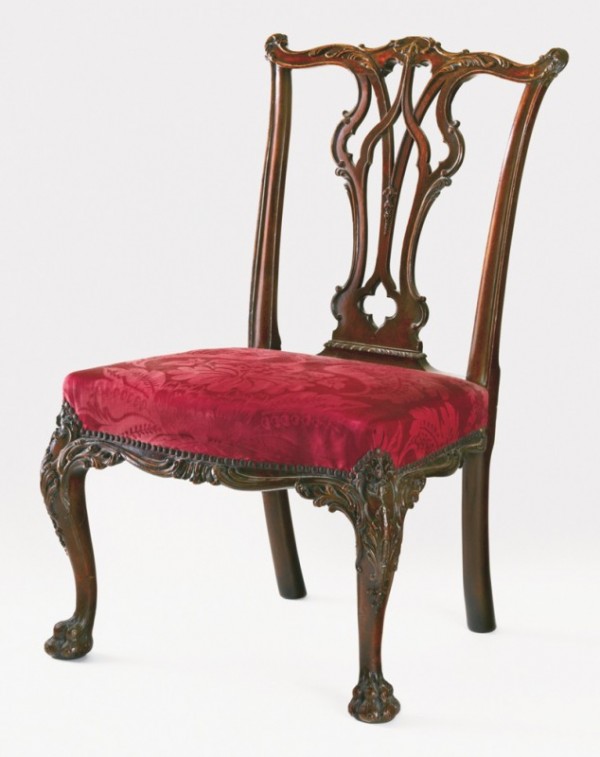
Side chair attributed to the shop of Benjamin Randolph with carving attributed to John Pollard, Philadelphia, Pennsylvania, ca. 1770. Mahogany with white oak. H. 36 3/4", W. (seat) 23", D. (seat) 19 1/8". The feet are restored. (Courtesy, Metropolitan Museum of Art, Rogers Fund, 1908 [08.51.10]; photo, Gavin Ashworth.)
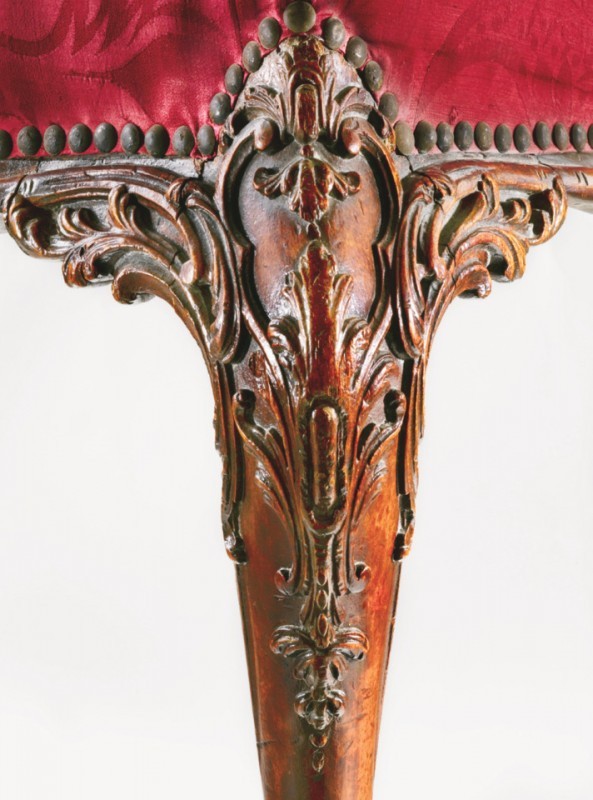
Detail showing the knee carving on the chair illustrated in fig. 58. (Photo, Gavin Ashworth.)
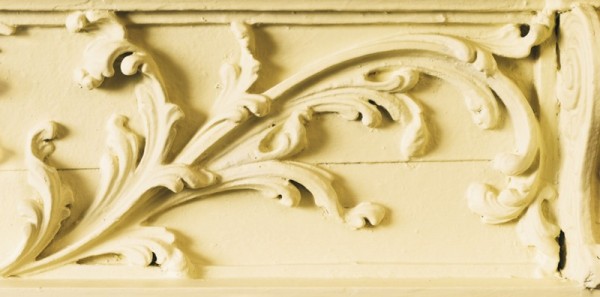
Detail of the door frieze illustrated in fig. 8. (Photo, Gavin Ashworth.)
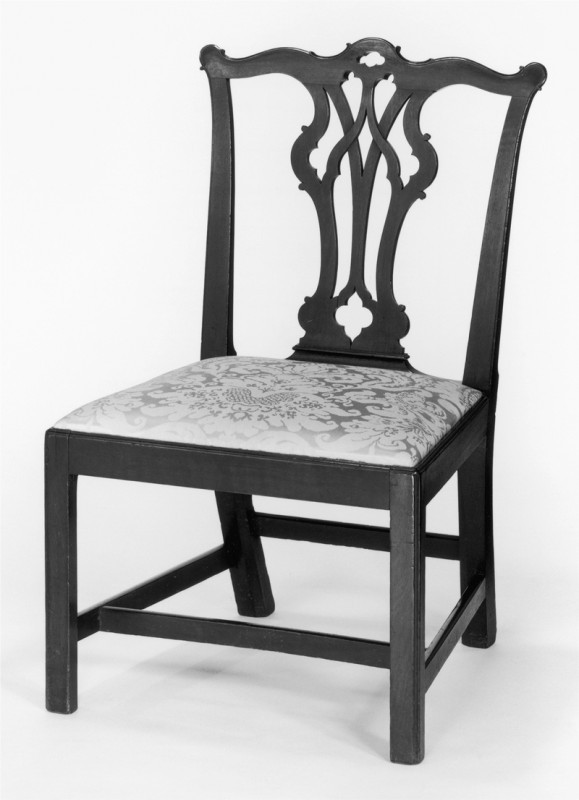
Benjamin Randolph, side chair, Philadelphia, Pennsylvania, ca. 1770. Mahogany with white cedar. H. 37", W. 22 5/8", D. 19 1/2". (Courtesy, Yale University Art Gallery.) This chair has Randolph’s label on a seat rail.
